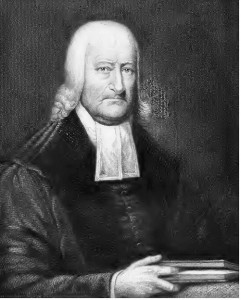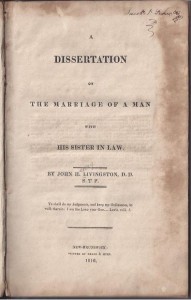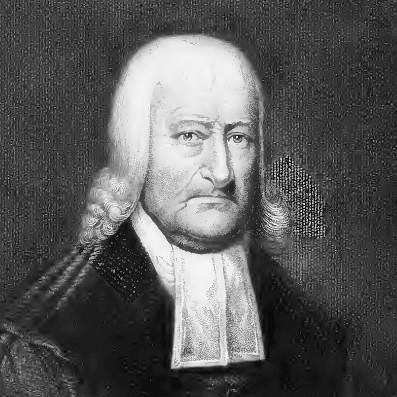 With this biography the meaning of “presbyterian” is expanded to include other denominations that are Calvinistic in theology, ruled by elders, and are ordered by connectionalism. Presbyterian means most basically rule by elders, and Presbyterian Churches are associated particularly with the Calvinism developed by John Knox. However, there are other denominations that follow Calvin’s teaching and have been finessed by their own key historical-theological personalities. Also, these churches, to a greater or lesser degree, have some form of connectional polity. In the case of the Reformed Dutch, the consistory is a synonym for session, a classis is like a presbytery, and the synod includes a number of classes. J. H. Livingston’s life and ministry were served in what was known at the time as the Reformed Dutch Church. Other churches can be included in the more generic category of “presbyterian” including the French (Huguenot) and the German and Swiss Reformed.
With this biography the meaning of “presbyterian” is expanded to include other denominations that are Calvinistic in theology, ruled by elders, and are ordered by connectionalism. Presbyterian means most basically rule by elders, and Presbyterian Churches are associated particularly with the Calvinism developed by John Knox. However, there are other denominations that follow Calvin’s teaching and have been finessed by their own key historical-theological personalities. Also, these churches, to a greater or lesser degree, have some form of connectional polity. In the case of the Reformed Dutch, the consistory is a synonym for session, a classis is like a presbytery, and the synod includes a number of classes. J. H. Livingston’s life and ministry were served in what was known at the time as the Reformed Dutch Church. Other churches can be included in the more generic category of “presbyterian” including the French (Huguenot) and the German and Swiss Reformed.
John Henry Livingston was a fourth-generation descendant of John Livingston, a Presbyterian from Scotland who moved to Rotterdam, Holland, in 1633 to escape persecution. He remained in Holland for the rest of his life dying on August 9, 1672, at the age of sixty-nine. His son John joined the Christians seeking freedom and new opportunities in the American colonies and settled in New York. John Henry Livingston was born at Poughkeepsie, New York, to Robert’s son, Henry, and his wife S. (Conklin) Livingston on May 30, 1746.
John Henry’s early education was accomplished with Rev. Chauncey Graham for about two years, and then his father hired a private tutor who guided the lad’s studies for another two years. He entered a formal school in New Milford, Connecticut, led by a Rev. Nathaniel Taylor for about a year. Prepared and ready for more formal studies he entered Yale College with the freshman class at the age of twelve in the fall of 1758. Some  aspects of his studies he found difficult due to deficiencies in his preparatory studies, but this did not keep him from persevering and graduating with honors in July 1762. With the completion of college studies he moved to Poughkeepsie, New York, to study law with Bartholomew Crannel, Esq., until the end of 1764. However, due to health problems, he did not complete his studies. The physical problems he experienced brought about concern regarding his salvation and as he wrestled with spiritual issues he came to believe the Gospel.
aspects of his studies he found difficult due to deficiencies in his preparatory studies, but this did not keep him from persevering and graduating with honors in July 1762. With the completion of college studies he moved to Poughkeepsie, New York, to study law with Bartholomew Crannel, Esq., until the end of 1764. However, due to health problems, he did not complete his studies. The physical problems he experienced brought about concern regarding his salvation and as he wrestled with spiritual issues he came to believe the Gospel.
When John Henry’s health improved, he did not return to studying for the bar but instead prepared for the ministry. At the advice of a minister acquaintance, John went to Holland for theological studies. He was just shy of his twentieth birthday when he set sail for the land of tulips, May 12, 1766, and arrived in Amsterdam on June 20. With letters of introduction opening the way, he entered the University of Utrecht and completed divinity studies in June 1769. He was examined by the Classis of Amsterdam, became a candidate, and was then licensed. Completion of his preparation in Holland could not have been better timed because he was invited to become pastor of the Reformed Dutch Church in New York City. Having received from the University of Utrecht the Doctor of Divinity and ordination by the Classis of Amsterdam he returned to New York arriving in September 1770. Rev. Livingston began immediately his pastoral service with the difficult task of resolving a split within the church. The division was resolved in 1772 when he brought together the two parties, the conferentie Dutch, who wanted to maintain their ethnic distinctions and connection to the Classis of Amsterdam, and the coetus who wanted to organize an American classis.
Dr. Livingston was settled into his pastorate with a few years of experience under his belt when in October 1775, he married Sarah, the daughter of the merchant and patriot Philip Livingston who would sign the Declaration of Independence the next year. The wedding was performed in Kingston, where Philip had moved the family because of the possibility the British might invade New York. He lived with his wife’s family and went to New York to preach as he had opportunity until September 1776 when the British forces took New York. The hostilities and presence of the British led to Livingston accepting the invitation of the consistory of the Dutch congregation in Albany to minister there until he felt he could return to New York. He ministered in Albany for three years before he had to move his family from the severe climate of Albany back south to his wife’s family’s manor in the summer of 1779. The Livingstons then moved to Poughkeepsie while he preached as stated supply in the local Dutch Church until he returned to New York when the British left in 1783. Dr. Livingston was the only one of four ministers that had ministered in New York before the war that was able to return and resume his labors after independence was obtained.
The end of the colonies and the beginning of the United States impressed upon the Dutch the need for a theological education program in America. At the recommendation of church leaders back in Holland, Dr. Livingston was proposed as the ideal candidate to teach theology, which led to his unanimous election to the professorship in October, 1784. He was inducted on May 19, 1785, and his lecture delivered in Latin was titled, “The Truth of the Christian Religion.” The addition of teaching theology to his already heavy load of responsibilities in the New York church taxed heavily his constitution. With the hope that summers in rural Flatbush (yes, it was rural at one time) on Long Island would reinvigorate his health, he moved there for a few years during the spring and summer and then returned to the city for winter. During this time, an assistant minister was hired by the church which helped lighten his load.
Dr. Livingston was not only a pastor of a congregation and a professor of theology, but he was also an active churchman. In 1787, he was appointed the chairman of a committee to make a selection of Psalms for the use of the Church in public worship. As the Reformed Dutch Church grew spreading its ministry in the new nation, the leaders recognized the need for a constitution containing the necessary documents for governing the church with Livingston working diligently on the committee that drafted these important standards. The Reformed Dutch Church Synod, in 1794, wanted his pastoral duties reduced so he could dedicate more time to teaching theology. To help the Synod, his congregation called a minister to assist him with the flock and relieve him of some of his shepherding responsibilities. The Livingstons moved to Bedford, a village about two miles from Brooklyn, so he could open a theological seminary. Shortly, however, problems led to closing the seminary necessitating Dr. Livingston’s return to the city. Subsequently, the Synod, in 1804, reappointed Dr. Livingston as a professor and had him teach theology in New York until a more suitable situation could be located. The substantial educational institutions among the descendants of the Reformed Dutch today owe their existence to Dr. Livingston’s and other fathers’ persistence and patience as they worked through a variety of problems developing theological and general education for their ministerial candidates, collegians, and children.
At the time of the revival of Queen’s College in New Brunswick, there was a conference held between its trustees and the Synod resulting in an agreement that Livingston’s teaching of theology should take place on the college property. As soon as the necessary funds were secured in October 1810, he was transferred to New Brunswick to fill the double office of seminary professor and president of the college. Dr. Livingston continued in his two-fold position at Queen’s College for the remainder of his life. Upwards of one hundred and twenty young men enjoyed the benefit of his teaching for their ministerial preparation.
In 1816, Livingston published A Dissertation on the Marriage of a Man with His Sister-in-Law, which was written at the request of the General Synod of the Reformed Dutch Church. The issue had been raised at the Synod’s recent meeting because a lower judicatory brought to the General Synod a case of a man who had contracted such a union. Livingston’s book developed his view that “a matrimonial connection with a sister in law, whether the wife of a deceased brother, or the sister of a deceased wife, which last is here more particularly the object of inquiry, is proved to be incestuous…[and] gross incest of the highest grade….” (p. 6). In the Presbyterian Church such marriages had been adjudicated on the basis of a sentence at the end of the Westminster Confession, 24:4, that provided the interpretive principle for discerning when marriages of affinity were incestuous; in the Dutch Church, which did not have a marriage article in its Confession of Faith as revised in 1613 and 1619, Livingston developed his case primarily with the Law of God as expressed in Leviticus 18:16. Thus, in the Presbyterian Church, the Law of God was brought to bear as interpreted by the Westminster Confession, which brought in the issue of subscription, but Livingston necessarily drew his case directly from the Bible for the Dutch. Livingston also appealed to decency, the interpretations of theologians and documents of the past including not only Dutch, but Lutheran, Roman Catholic, the Church Fathers, Calvin, and others to make his case.
On January 19, 1825, John Henry Livingston went to bed at the usual time without complaining of sickness, but in the morning he was found dead to this world. His funeral service was conducted by Philip Milledoler, D.D., who was one of the pastors of the Collegiate Church in New York. Several commemorative discourses were preached by his former colleagues including John Dewitt, Sr., D.D., Professor of Biblical Criticism, Church History, and Pastoral Theology in New Brunswick; and the Reverends N. J. Marselus of Greenwich, C. C. Cuyler of Poughkeepsie also spoke. Mrs. Livingston had died in December 1814, and she and her husband had one child, Henry A. Livingston, who survived his father many years and was at one time a member of the Senate of the State of New York.
To some degree in America, John Henry Livingston was to the Reformed Dutch Church as John Witherspoon was to the Presbyterian Church. Both Witherspoon and Livingston were important influences for the constitutional documents of their respective churches. Witherspoon’s presidency of the College of New Jersey is paralleled by Livingston’s work with both what became New Brunswick Seminary and Rutgers University. Both men were pastors and popular preachers as well. However, Witherspoon’s considerable involvement in politics and the Revolution were not reflected in the life of Livingston. Both men had a common ancestry in Scotland, so it could be said that many stones in the foundation of American Dutch Reformed Christianity were set by a man of Kilts and Dirks descent named John Henry Livingston.
Some of Dr. Livingston’s publications include–An Inaugural Oration in Latin, 1785; A Sermon before the New York Missionary Society, 1799, and another in 1804; An Address at the Commencement in Queen’s College, 1810; An Address to the Reformed German Churches in the United States, 1819; The Psalms and Hymns, with the Catechism, Confession of Faith, and Liturgy of the Reformed Dutch Church in North America, Selected at the Request of the General Synod, New York: D. Smith, 1819; and the full citation for the book mentioned in this Presbyterians of the Past biography is, A Dissertation on the Marriage of a Man with his Sister-in-law, New Brunswick: Deare & Myer, 1816, 179 pages (see title page image above).
BARRY WAUGH
Sources—Alexander Gunn, Memoirs of the Rev. John H. Livingston, D.D.S.T.P., Prepared in Compliance with a Request of the General Synod of the Reformed Dutch Church in North America, New York: Rutgers Press, 1829; W.B. Sprague, Annals of the American Pulpit; or Commemorative Notices of Distinguished American Clergymen of Various Denominations, vol. 9, New York: Robert Carter and Brothers, 1869, pp. 52–56.





